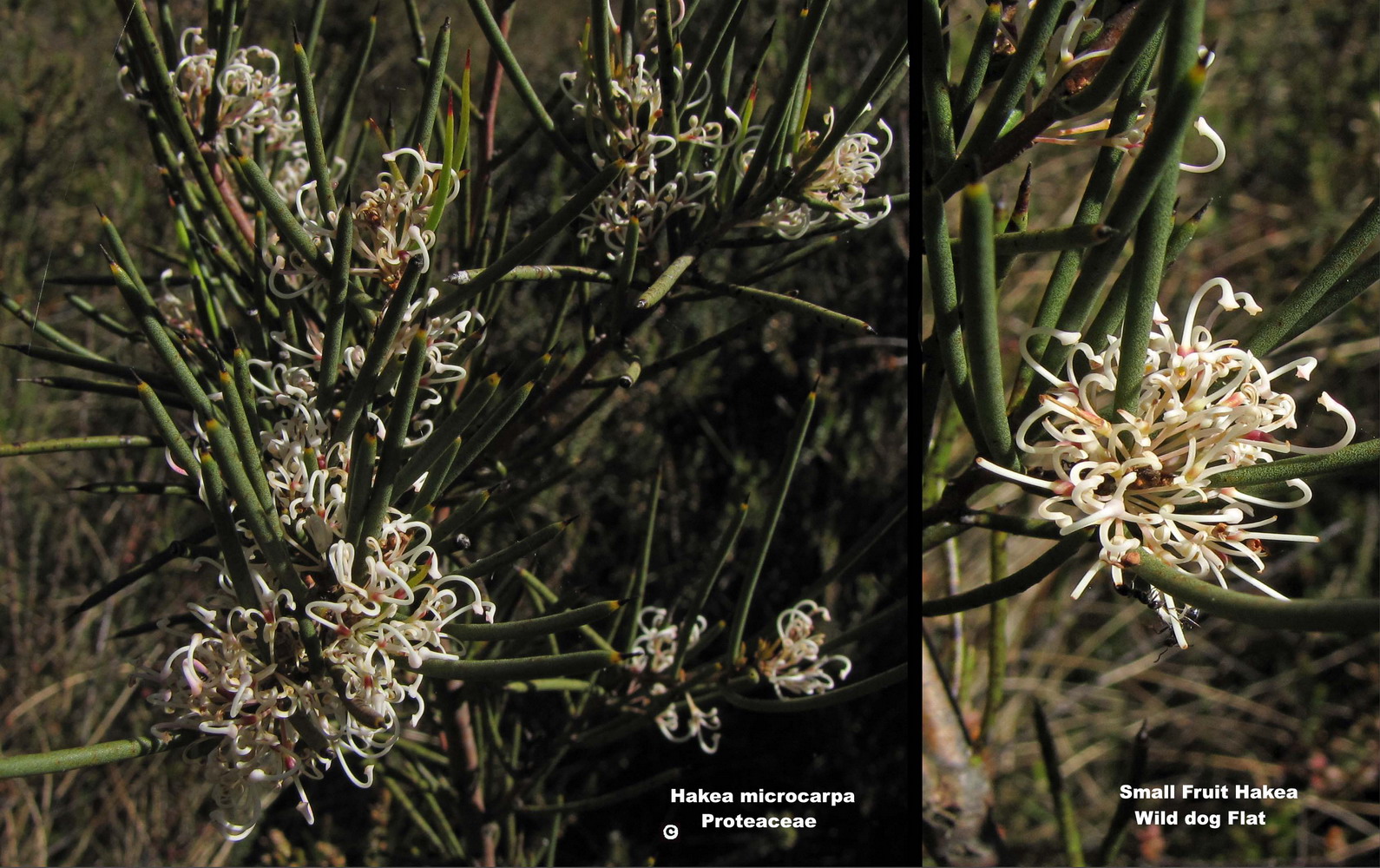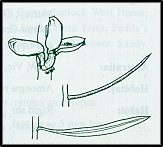Description
Common names
Small-fruited Hakea, Small-fruit Hakea, Various-leaved Hakea.
Scientific names
Hakea microcarpa, Hakea patula, Hakea bifrons, Hakea glabriflora.
Family
Proteaceae.
Genus
Hakea.
Name origin
Hakea, after Baron Christian L. von Hake, 18-19th century German patron of botany. Microcarpa, from Greek micro, small, and carpos, fruit, referring to small fruit.
Rainfall
900mm.
Growth height
Up to 2m.
Presence in Australia
Noted only in Munderoo district. Possibly also in surrounding areas in similar country.
This specie has been identified in the following Australian states: Qld, NSW, Act, Vic, Tas.
Habitat
Wet situations in dry sclerophyll forest and woodland, including streamsides and bogs, or heathy swamps, mainly at higher altitudes.
Habit
Small, rigid, open, spreading shrub to 2m high. Cylindrical or flattened leaves 3-11cm long on erect branches.
Site preference
Wet areas. Tolerates frost.
Flowering
Creamy-white, spring-early summer. Conspicuous.
Seed collection
Monitor closely as seeds shed 3-14 days after maturity. Ensure collection by securing nylon stockings or paper bags over seed pods. Large quantities generally available.
Propagation
From seed. Germinates readily from fresh seed. Suitable for direct seeding into pots.
Shade and shelter
Useful low-level cover in windbreaks in poorly drained sites.
Land protection
Useful for improving drainage in wet sites.
Wildlife
Flowers are a food source for native insects. Foliage good refuge for small birds.
Ornamental
Attractive, particularly when flowering or with open fruits. Easily cultivated. Prune regularly to promote branching.



